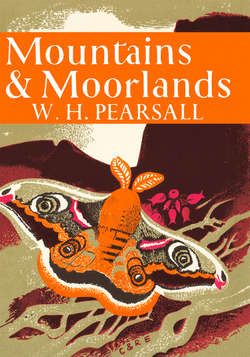Читать книгу Mountains and Moorlands - W. Pearsall H. - Страница 6
ОглавлениеAUTHOR’S PREFACE
THIS book is an expression of many happy days in the field and is thus a tribute to the many naturalist friends who have consciously or unconsciously helped towards it by sharing their interests and enthusiasms. I should like to think that they may find some satisfaction in its dedication and that they would feel that they had in part contributed towards its creation.
When so much is owed to others, it may seem invidious to mention any by name. But the largest part of the animal population is composed of insects and for these specialised knowledge is unavoidable, even for a general review. I count myself extremely fortunate in having been able to obtain the sort of information I wanted, and also pertinent criticisms, from Mr. C. A. Cheetham, Professor J. W. Heslop Harrison and Mr. W. D. Hincks, the last of whom also verified the names according to the Check List of British Insects. Mr. W. H. R. Tams very kindly gave much help in the preparation of Plate 30. The Editors too have been generous in help and criticism; and, finally, a tribute must be made to the photographic skill of Mr. John Markham.
In spite of this, I fear that this may be thought an odd book, remarkable more for its omissions than its scope. It tries to integrate certain aspects of upland biology of which it may safely be said that about ten years’ intensive work would be required to do them reasonably well. The real integration, perhaps, is that it tells about some of the things that have interested its author.
W. H. P.
University College, London
PREFACE TO REVISED EDITION
Professor Pearsall died in October 1964. A lifetime of active work as a field ecologist, university teacher and administrator, ecological advisor and one of those most concerned with the foundation of the Nature Conservancy, had left him too little time to write. Mountains and Moorlands remains as his major work for the general reader; it is a classic, and must not be touched by a lesser hand. But in the twenty years since its publication, further research has inevitably modified certain concepts. When I was asked by Collins to revise Mountains and Moorlands for this edition, it seemed to me that Chapter 10, on ecological history, should be largely rewritten in the light of new work and the emergence of the technique of radiocarbon dating since 1950. Chapter 10 was partly based on the work of Dr. Verona Conway and myself, and the revised edition of this chapter has been approved by Dr. Conway and by Mrs. Pearsall. I am grateful to Miss Clare Fell for advice on changes in the interpretation of the archaeological record in North-west England since R. G. Collingwood’s account of 1933, which formed the basis of Professor Pearsall’s discussion of the ecological history of North-west England. In other chapters I have changed only a few sentences, to conform with new discoveries, and have provided additional bibliography to cover relevant work published since 1950. Chapter 15, a brief account of the work of the Nature Conservancy in Highland Britain, has been added to the book because of Professor Pearsall’s concern with the Nature Conservancy—he was for many years Chairman of its Scientific Policy Committee—and because of the relevancy of the work of the Conservancy to the matters discussed in Chapter 14 of Mountains and Moorlands, which was written before that work had begun.
The nomenclature of plants has been revised to conform with current usage; on the advice of various colleagues, the revised nomenclature, with two exceptions, conforms with that found in Clapham, Tutin and Warburg’s Excursion Flora of the British Isles, Second Edition; the Census Catalogue of British Mosses, by E. F. Warburg, Third Edition, published by the British Bryological Society in 1963; the Census Catalogue of British Hepatics, by J. A. Paton, Fourth Edition, published by the British Bryological Society in 1965; and A New Check-list of British Lichens, by P. W. James, in The Lichenologist, Volume 3, 1965. The exceptions are that Scirpus caespitosus has been retained, instead of Trichophorum caespitosum, as in Clapham, Tutin and Warburg, and that Cladonia sylvatica agg. has been retained, as it includes the two species, Cladonia arbuscula and C. impexa, of the Check-list.
W. P.
University of Leicester and The Freshwater Biological Association
